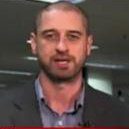
Few CEOs would disagree with the president that the U.S. could do with an infrastructure spending boost. Though some may question exactly where his $1 trillion should go.
Is it time to upgrade the country’s broadband network? Or should more capital be plowed into roads and bridges?
Of course, leaders in different industries may have different views on where the money should be spent. And each has their own shareholder base to serve, perhaps making broadband investment a more attractive proposition for the likes of AT&T and new roads more helpful for Amazon.
The president himself also faces a choice: should he focus on infrastructure that’s most in need of construction or repair, or should he gravitate to projects that create the most jobs?
A new analysis has attempted to answer that question. And given Donald Trump’s focus on job creation, it could provide insight into which projects will be first on the list.
Boston Consulting Group and CG/LA Infrastructure evaluated more than 60 projects—including repairing the Arlington Memorial Bridge, building a new airport in Orlando and expanding Savannah harbor in Georgia—that could all possibly start this year.
They deduced that hospital investments created the greatest number of long-term jobs, with 4,500 positions for every $1 billion invested. Seaports and airports also scored highly in the job-creation ranks.
When it came to criticality, inland waterways were found to be in most need of repair. Unfortunately, such projects only created 800 jobs per $1 billion, one of the lowest ranking sectors in the job stakes.
Highways and mass transit also were found to be in most need of repair. Airports, too, ranked highly here, meaning they were the single category to score highly in both the jobs and criticality stakes—good news, perhaps, for airline CEOs.
“Maximizing job creation, with a heavy emphasis on long-term jobs generating tax revenues that will help offset the up-front costs to taxpayers, should be a key objective of an infrastructure investment program,” BCG partner and report author Mark Hill said.
To be sure, he said the president also must heed the importance of criticality, given that some projects, while not directly employing many people, will boost the country’s competitiveness and productivity.
If the president only focused on maximizing jobs, the authors estimated he could create 4 million with the $1 trillion investment. Instead, they have recommended a more balanced approach that still creates 3 million jobs but doesn’t neglect sectors such as public transport and inland waterways.
That plan, tabled yesterday at an industry conference in Washington, can be viewed in full here.




0

1:00 - 5:00 pm
Over 70% of Executives Surveyed Agree: Many Strategic Planning Efforts Lack Systematic Approach Tips for Enhancing Your Strategic Planning Process
Executives expressed frustration with their current strategic planning process. Issues include:
Steve Rutan and Denise Harrison have put together an afternoon workshop that will provide the tools you need to address these concerns. They have worked with hundreds of executives to develop a systematic approach that will enable your team to make better decisions during strategic planning. Steve and Denise will walk you through exercises for prioritizing your lists and steps that will reset and reinvigorate your process. This will be a hands-on workshop that will enable you to think about your business as you use the tools that are being presented. If you are ready for a Strategic Planning tune-up, select this workshop in your registration form. The additional fee of $695 will be added to your total.

2:00 - 5:00 pm
Female leaders face the same issues all leaders do, but they often face additional challenges too. In this peer session, we will facilitate a discussion of best practices and how to overcome common barriers to help women leaders be more effective within and outside their organizations.
Limited space available.

10:30 - 5:00 pm
General’s Retreat at Hermitage Golf Course
Sponsored by UBS
General’s Retreat, built in 1986 with architect Gary Roger Baird, has been voted the “Best Golf Course in Nashville” and is a “must play” when visiting the Nashville, Tennessee area. With the beautiful setting along the Cumberland River, golfers of all capabilities will thoroughly enjoy the golf, scenery and hospitality.
The golf outing fee includes transportation to and from the hotel, greens/cart fees, use of practice facilities, and boxed lunch. The bus will leave the hotel at 10:30 am for a noon shotgun start and return to the hotel after the cocktail reception following the completion of the round.